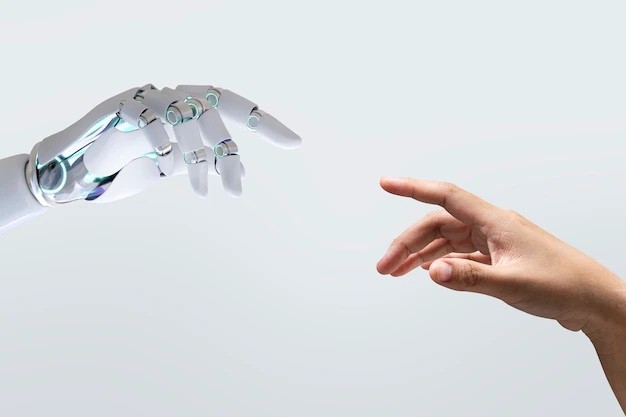How Technology Connects and Divides Us: Navigating the Digital Age

In an ever-evolving digital landscape, we find ourselves traversing the intricate web of technology that both connects and divides us. From the depths of our emotions to the rapid pace of communication, the impact of our digital world is as profound as it is complex. Let’s embark on a journey to explore the multifaceted ways in which technology has fundamentally altered human connection and vulnerability.
The Emotional Realm of Technology
In the heart of our digital interactions lies a complex emotional landscape. Through our devices, we experience a spectrum of emotions, from joy and comfort to even grief. Virtual reality, for instance, allows us to immerse ourselves in fantastical worlds, where emotions can run deeper than in our physical reality. But with these new dimensions of experience come challenges. Virtual connections can sometimes feel more intense than real-life interactions, leaving us with a sense of disconnection when we return to our physical surroundings. This emotional rollercoaster raises questions about our ability to distinguish between virtual and real emotions.
Furthermore, technology creates a paradox of emotions. The thrill of receiving a flood of likes on a social media post is real, but so is the anxiety that arises when we compare our lives to the curated images of others. The fear of missing out (FOMO) is a palpable emotional response to our digital interconnectedness. Our emotional lives have become entwined with the digital realm in intricate ways, demanding that we navigate this landscape with self-awareness and mindfulness.
The Revolution in Communication
The digital era has transformed the way we communicate. Instant messaging and social media have made the world smaller, enabling us to connect with friends and colleagues on opposite sides of the globe with a simple click. The speed of communication brings enormous benefits, such as fostering global collaboration and enabling real-time updates. However, it also challenges our ability to engage in deep, meaningful conversations. As we prioritise brevity and immediacy in our digital exchanges, are we sacrificing the richness of face-to-face communication?
Moreover, the digital landscape introduces new complexities in our communication. Misunderstandings can easily arise from the absence of tone and body language in text-based conversations. Online arguments can escalate quickly, leading to unintended conflicts. The rapid dissemination of information also means that misinformation can spread like wildfire. Our challenge is to harness the speed and reach of digital communication while preserving the depth and authenticity of our conversations.
Vulnerability in the Digital Age
As we integrate technology into our lives, we expose ourselves to new vulnerabilities. Cybersecurity risks constantly loom, threatening our personal data and privacy. Each time we connect to the internet, we open ourselves to potential threats, from hacking attempts to phishing schemes. The digital world is a double-edged sword, offering convenience and peril in equal measure. We must stay vigilant and protect ourselves in this interconnected landscape.
Moreover, the constant connectivity of the digital age raises questions about our psychological well-being. Studies suggest that excessive screen time and social media use can lead to feelings of isolation and depression. The pressure to curate a perfect online persona can contribute to anxiety and insecurity. As we navigate this digital minefield, we must be mindful of our vulnerabilities and prioritise mental health and well-being in the digital realm.
The Changing Face of Relationships
The digital world is profoundly reshaping how we form and maintain relationships. Online dating platforms have revolutionised the way people meet, introducing us to potential partners we might never have crossed paths with in the physical world. These platforms offer a vast pool of potential matches. Still, they also raise questions about the authenticity of online personas and the challenges of finding genuine connections amid a sea of profiles.
Beyond romantic relationships, technology is also redefining friendships. Social media platforms allow us to stay connected with friends from childhood, collaborate with colleagues across borders, and even forge new friendships with like-minded individuals from around the world. But as our digital networks expand, some argue that we’re sacrificing the depth of our connections for the breadth of our social circles. How can we strike a balance between quantity and quality in our relationships?
The Future of Human-Technology Integration
As we gaze into the future, the integration of technology into our lives is poised to deepen further. Imagine a world where AI companions offer companionship and support to the elderly, enhancing their quality of life. In the future, machines may become not just tools but true companions. However, this raises questions about the nature of these relationships. Can a machine genuinely provide the emotional support and companionship that humans seek? How will we navigate these complex human-AI dynamics?
Moreover, augmented and virtual reality is on the horizon, promising to immerse us in digital experiences like never before. Imagine travelling the world without leaving your home or collaborating with colleagues as if they were in the same room. This opens exciting possibilities for connection and collaboration, but it also challenges our understanding of physical reality and raises ethical questions about the potential for addiction to virtual worlds.
In conclusion, technology has intricately woven itself into the fabric of our lives, redefining connection and vulnerability. As we navigate this ever-evolving landscape, it’s imperative to reflect on how we can harness the benefits of technology while mitigating its challenges. Share your thoughts, experiences, and insights in the comments below, and let’s continue this conversation in the digital age.


